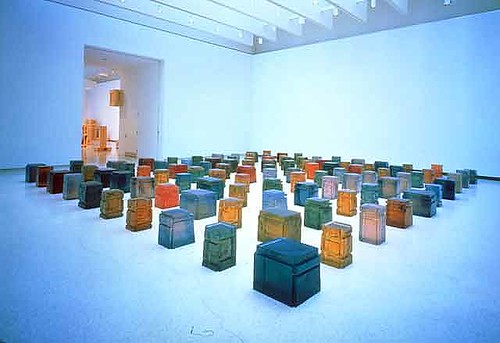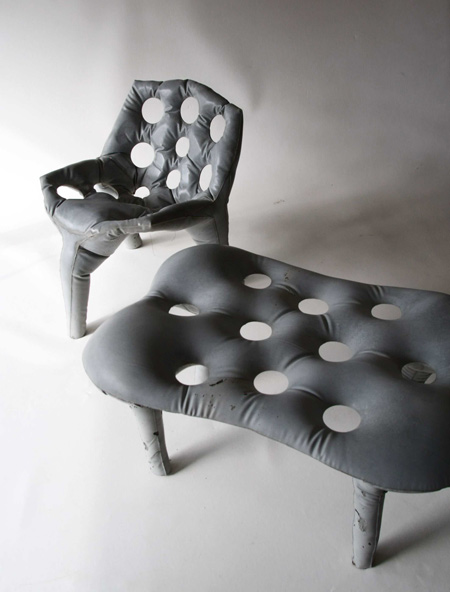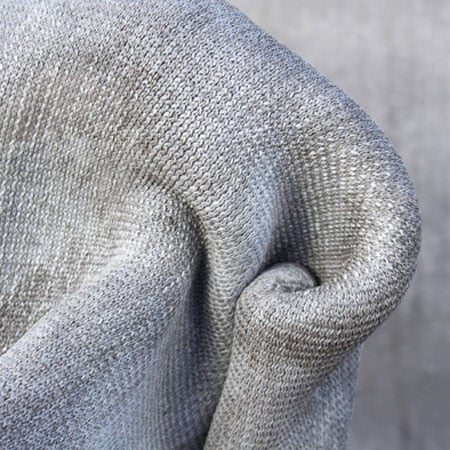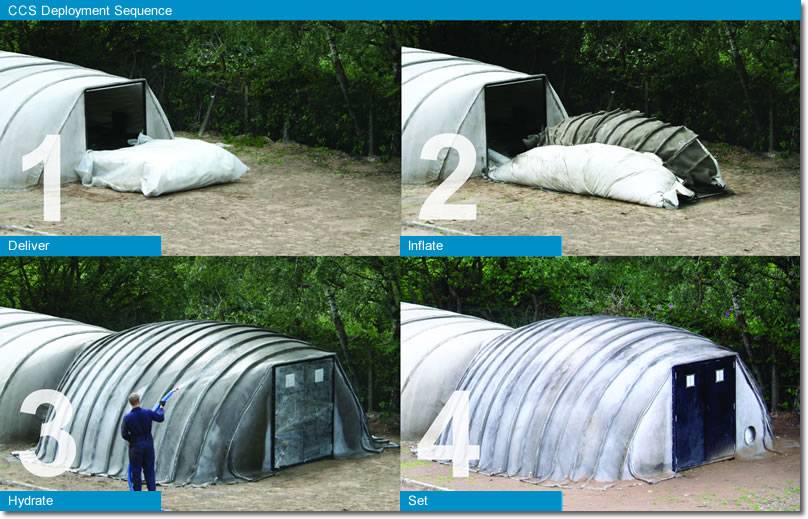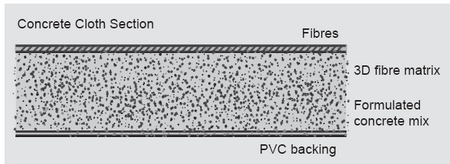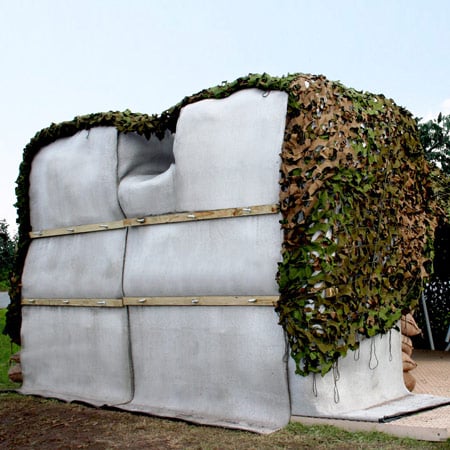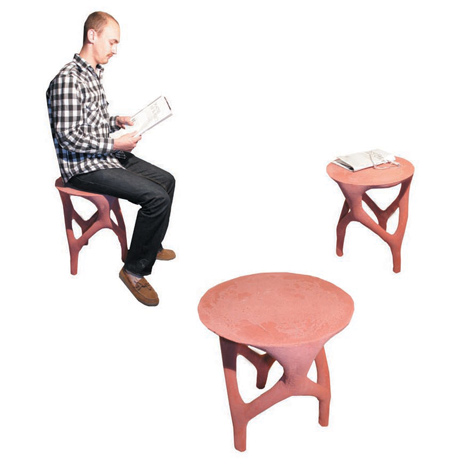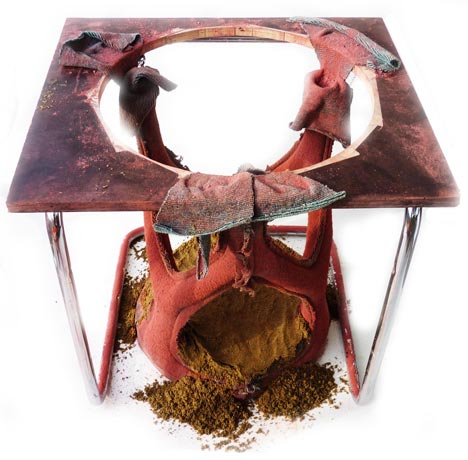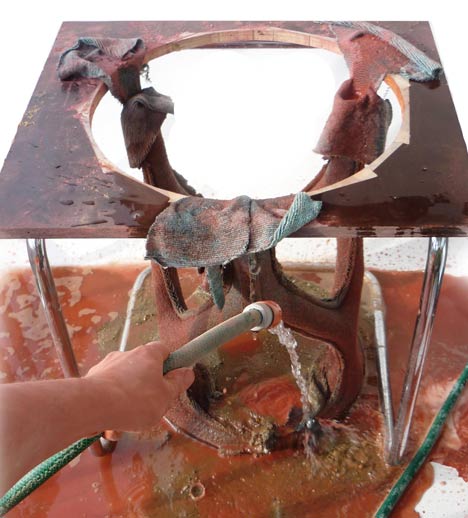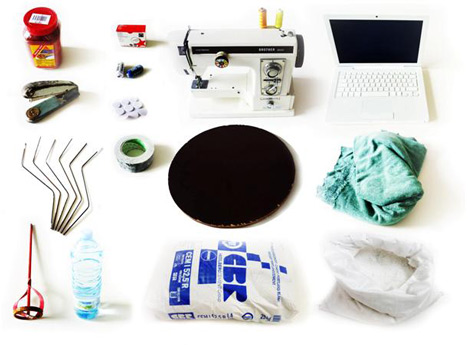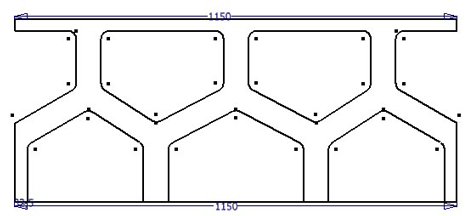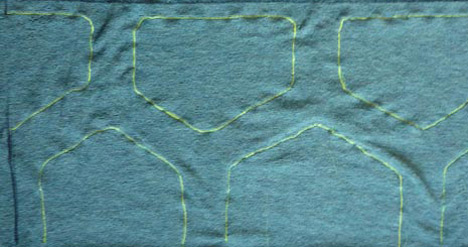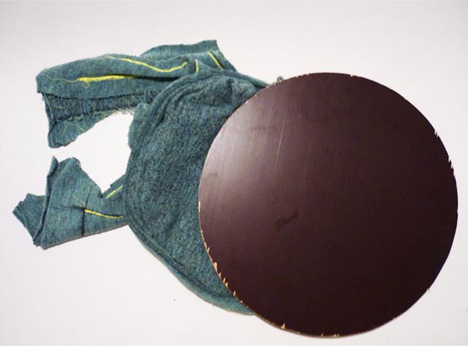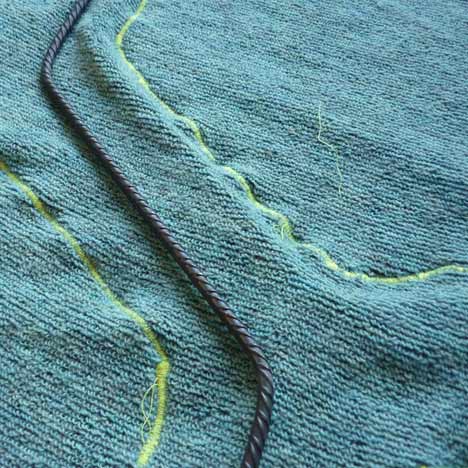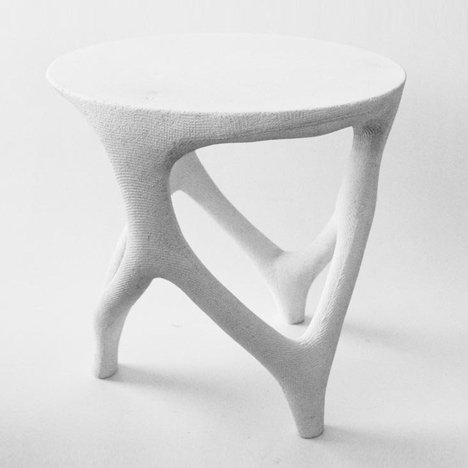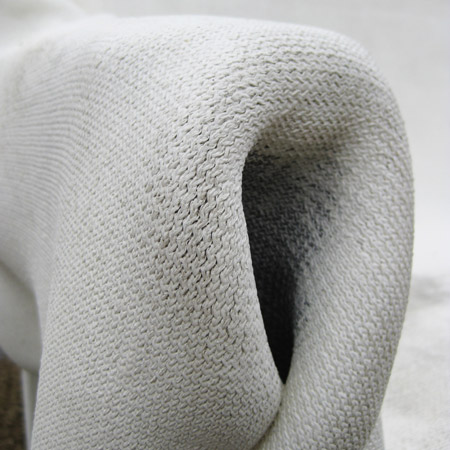[When crayfish aren't happy at the habitat you've got - remake the 'city plan' - hence the name: Cancer City]
Swedish architects
VisionDivision have collaborated with
Butong on their recent project Cancer City, an underwater habitat for cray fish - with the luxurious feature of embedded LED lighting to ease catching the crayfish by night.
Butong seems to be a brand new company and patent for a 'concrete based material' as the company write on their website. Another term to use might be the also very broad ECC (Engineered Cementious Composite) which just implies that the material contains cement.
It seems like both the concrete properties and the formwork technology are very flexible in deed. The surfaces look draped.
Read more about
Cancer City here.
Scroll down to view other applications of Butong's own products.
[Embedded functions in the Cancer City]
[Section of the habitat]
[Cancer city before put in the river]
[Crayfish hunting in the LED illuminated underwater concrete landscape]
The architects write about the special concrete they used:
"The choice of material was crucial for the success of the project.
The construction obviously should be water resistance, the city should be strong enough to carry some full grown persons or animals walking on it, the city should also provide shelter to the crayfishes and the construction should not be too heavy since it should be moved to a remote place where no machines can go. The choice of material became "Butong"; a lightweight slightly transparent concrete invented by the firm with the same name.
Butong is only two centimeters in depth without any metal reinforcement that can rust and the mould could be bendable after casting,
which enabled us to make an undulated landscape of concrete without having to build time consuming casting forms. Another attribute with Butong is that it includes calcite; a substance that attracts crayfishes."
[Lamp design by Butong: Bright Night will hit Swedish stores soon (and hard ;)]
[Panel design: Buttong-Pattern]
[Panel design using Butong]
Thin, perforated concrete
I especially enjoy the combination of the concrete and formwork technologies to perforated panel designs. They remind me of beautiful traditional islamic shutters. Besides the effects of transparency and the surface design, using this kind of filigree concrete for solar filtering, you obtain a thermal effect from the concrete mass.
The mass cools down at night and helps keeping the interior cool during the day of blazing sun.
[Fragment of a lattice window shutter, Lahore, Pakistan, 15th century. From www.lindenmuseum.de ]
I just looked these shutters up - they're called moucharabiehs - how could I forget ;)
"Summers can be exceedingly hot in Islamic lands; consequently, from an early date
openings in buildings were partially closed by means of open-work coverings made from stone, stucco, ceramic, or wood.
These coverings were commonly known as claustra after the Romans, and subsequently came to be called moucharabiehs in the Arab world and jali in India."
[Window screen (jali), floral and lattice design India, c. 1630-1650 or first half of the 17th century Red sandstone, openwork and engraved decoration, Louvre]





